
[Editor's note: be sure to call historic sites before visiting to confirm open hours.]
Autumn is tourism season for much of New York State, and for good reason. The air is crisp, the leaves are changing, and there are tons of great places to visit. But some of New York's most interesting hidden gems are easy to miss. This season I've explored just a fraction of New York's unique heritage and culture. Here are some day and weekend trips I recommend based on my travels.

Begin your venture at Kingston, New York’s Stockade District. Did you know that this historic neighborhood can claim America’s only intersection where all four corners still have pre-Revolutionary War structures? These handsome stone buildings now include the Matthewis Persen House Museum, a happening bookstore/café (formerly the Kingston Academy,) and law offices. On any given morning, you’re likely to see dog walkers, young parents, and coffee-swilling hipsters, as well as suited lawyers on their way to their appointments.
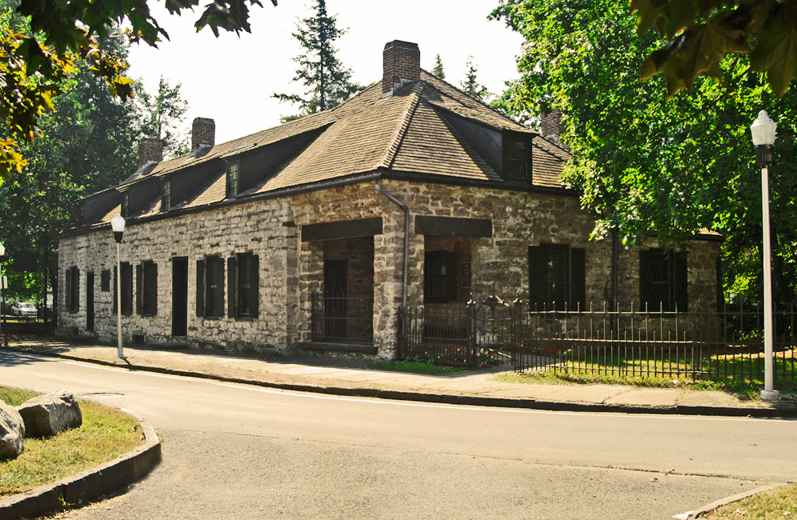
The Senate House State Historic Site is also in the Stockade. During the British military invasion of 1777, the elected representatives of rebellious New Yorkers met in Kingston to form a new state government. New York's first Senate met here, in the simple stone house of merchant Abraham Van Gaasbeek. The site is currently undergoing a major renovation. While the buildings aren’t open, the grounds are, and have picnic tables and Adirondack chairs perfect for a luncheon in the yard.
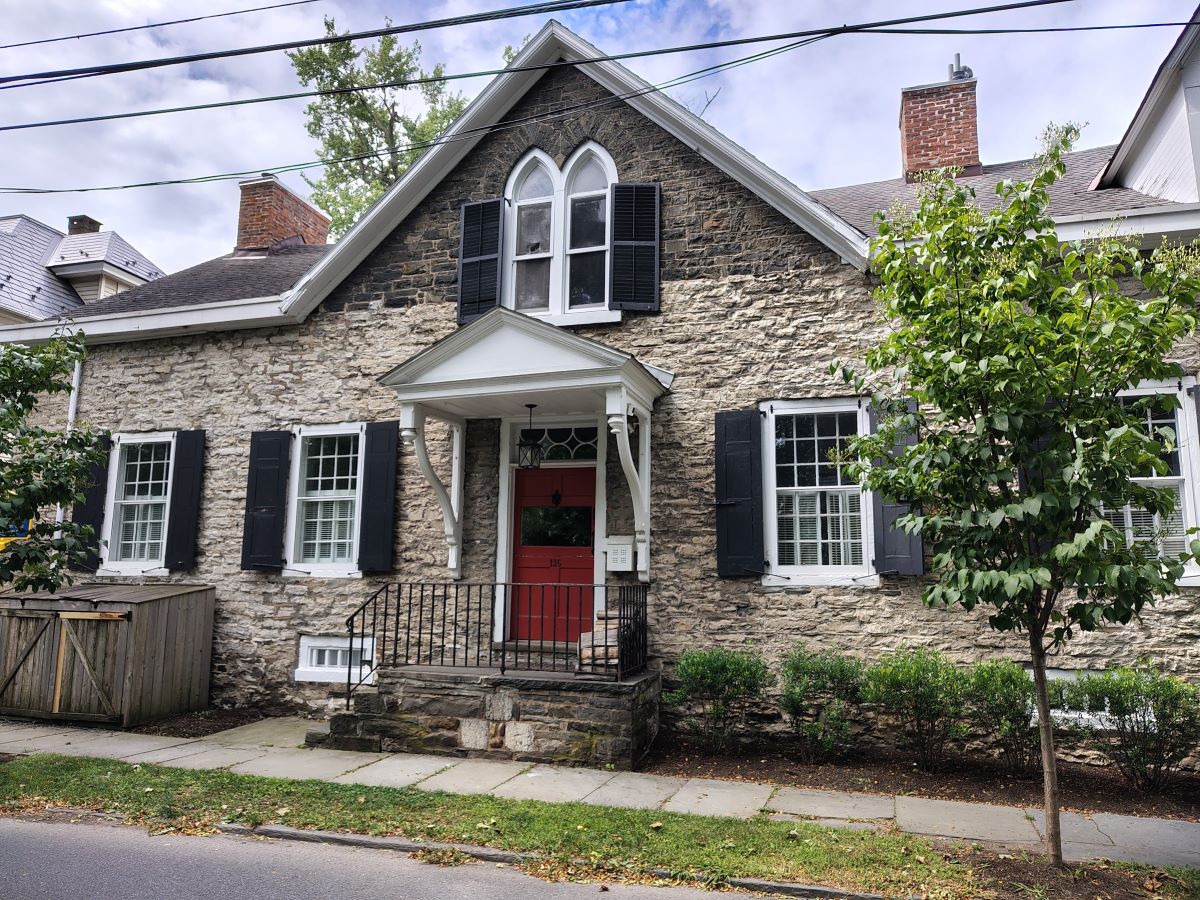
While in Kingston, stroll by the Colonel Abraham Hasbrouck House (also in the Stockade District) where American abolitionist Sojourner Truth toiled, when in 1828, she sued to have her son freed from slavery—and won. Truth, originally named Isabell Baumfree, spoke Dutch as her native language! In fact, Truth is known for an 1851 speech, usually called Ain't I a Woman? There is a transcription of her original speech, where she never utters those words, but says instead “I am a woman’s rights.” It was published in the Anti-Slavery Bugle. Twelve years later, a version appears in the New York Independent, where a writer named Frances Gage rewrites it, giving Truth a horrible southern dialect. That’s the one most people are familiar with.
Colonel Hasbrouck’s House is now an AirBnB, by the way. New on the Kingston waterfront is Sojourner Truth State Park. It offers sweeping views of the Hudson River, remnants from the brick-making industry, quarry ponds, and diverse habitats like woods and wetlands. The park features a paved Hudson River Brickyard Trail, part of the Empire State Trail.
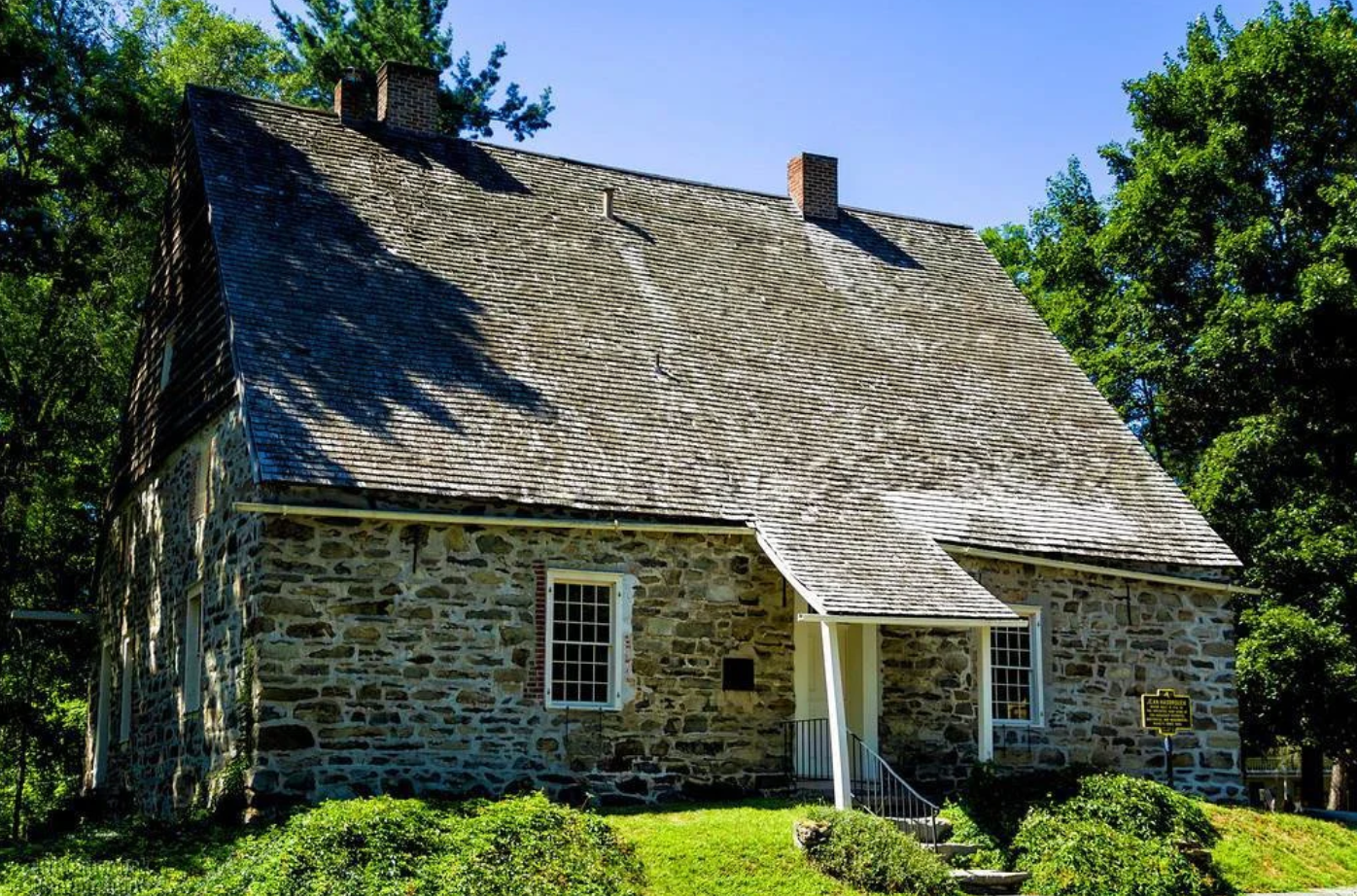
A half hour south of Kingston by car is the college town of New Paltz. Having a State University of New York campus just outside of the village guarantees a lively street scene, with shops and cafes. Historic Huguenot Street boasts a collection of seven stone houses, a reconstructed church, and a replica of an Esopus Munsee wigwam. According to their website, “Period rooms and exhibits tell the stories of a French-speaking Protestant settlement as it evolved over time, and also reveal the history of the area’s Indigenous and enslaved African peoples and Dutch settlers.”
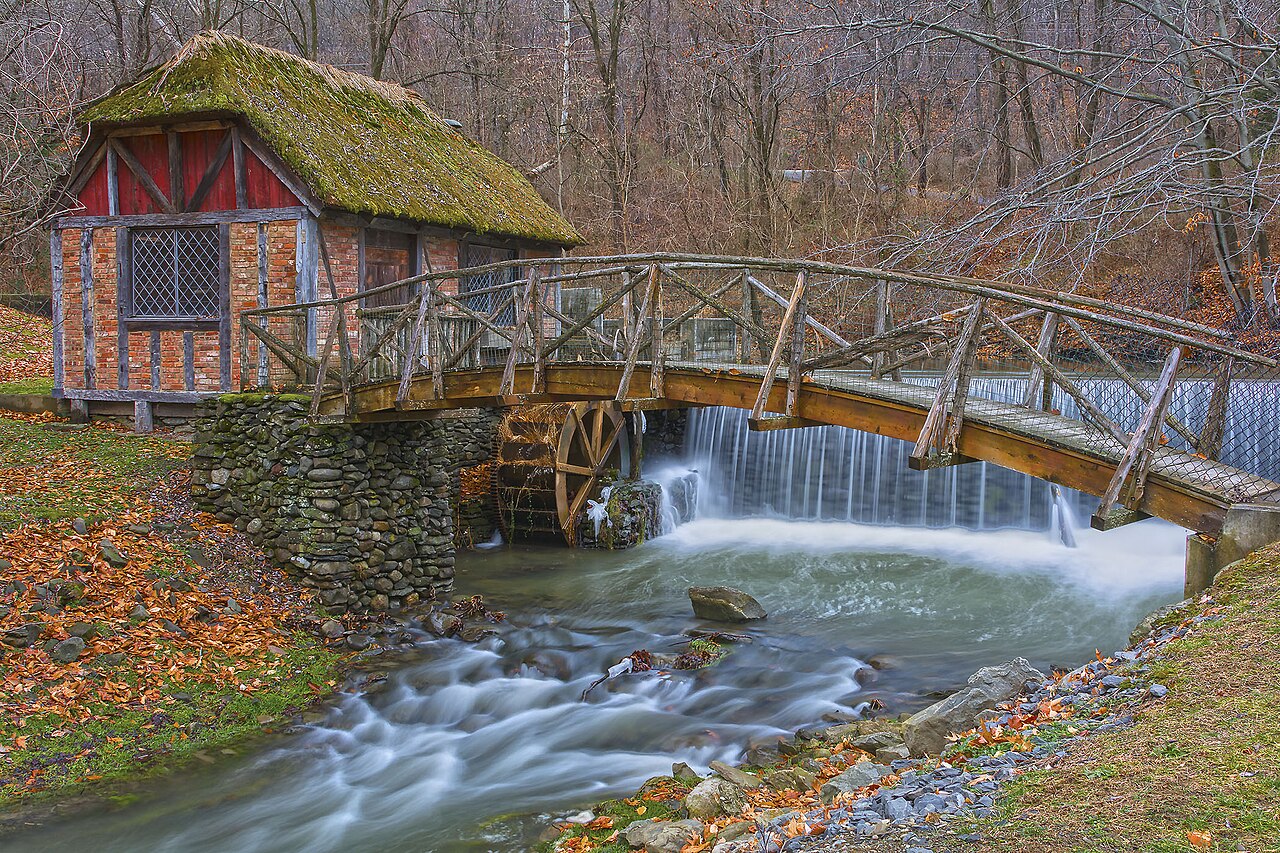
Further south, in the town of Marlboro is the Gomez Mill House, the oldest Jewish dwelling in North America. Luis Moses Gomez, a Sephardic Jew, traded out of this structure with the Munsee, the oldest part of which dates to 1714. For much of the 19th century, it was occupied by the prominent farming family of William Henry Armstrong. In the early 1900s, it was bought by Arts and Crafts legend Dard Hunter, who made his own paper and published handmade books. After Hunter, it was occupied by Martha Gruening, a journalist, lawyer, and civil rights pioneer. The museum is currently closed for renovations, but the picturesque grounds are open.
Other historic sites to explore include the Old Dutch Church and Hudson River Maritime Museum in Kingston, the Saugerties Lighthouse, and more.

When in Hyde Park, New York, visit Springwood, the birthplace of America’s 32nd president, Franklin Delano Roosevelt. The first Roosevelt came to New Amsterdam as Claes Martenszen van Rosenvelt around 1649, preceding the Phillipses by a few years. Claes was a successful importer of dry goods and a refiner of sugar. The family’s true wealth came from real estate, and at one point they owned a substantial property in midtown Manhattan, including the site of today’s Empire State Building. As wealthy merchant/landowners, it’s likely that the Roosevelts and Philipses would have known each other in the tiny burg of New Amsterdam. Generations later in 1867, the Roosevelts acquired a modest mansion and 110-acre estate and expanded the house to have 17 bedrooms. Franklin was born there in 1882.

Springwood is filled with the Roosevelt’s furnishings, including original furniture, paintings, and the display of stuffed birds that Franklin taxidermized as a youth. Run by the National Parks Service, you can enjoy a tour with a seasoned Ranger. Don’t miss the burial monument of Franklin and Anna Eleanor—yes, Anna, who knew?—in the lovely rose garden.
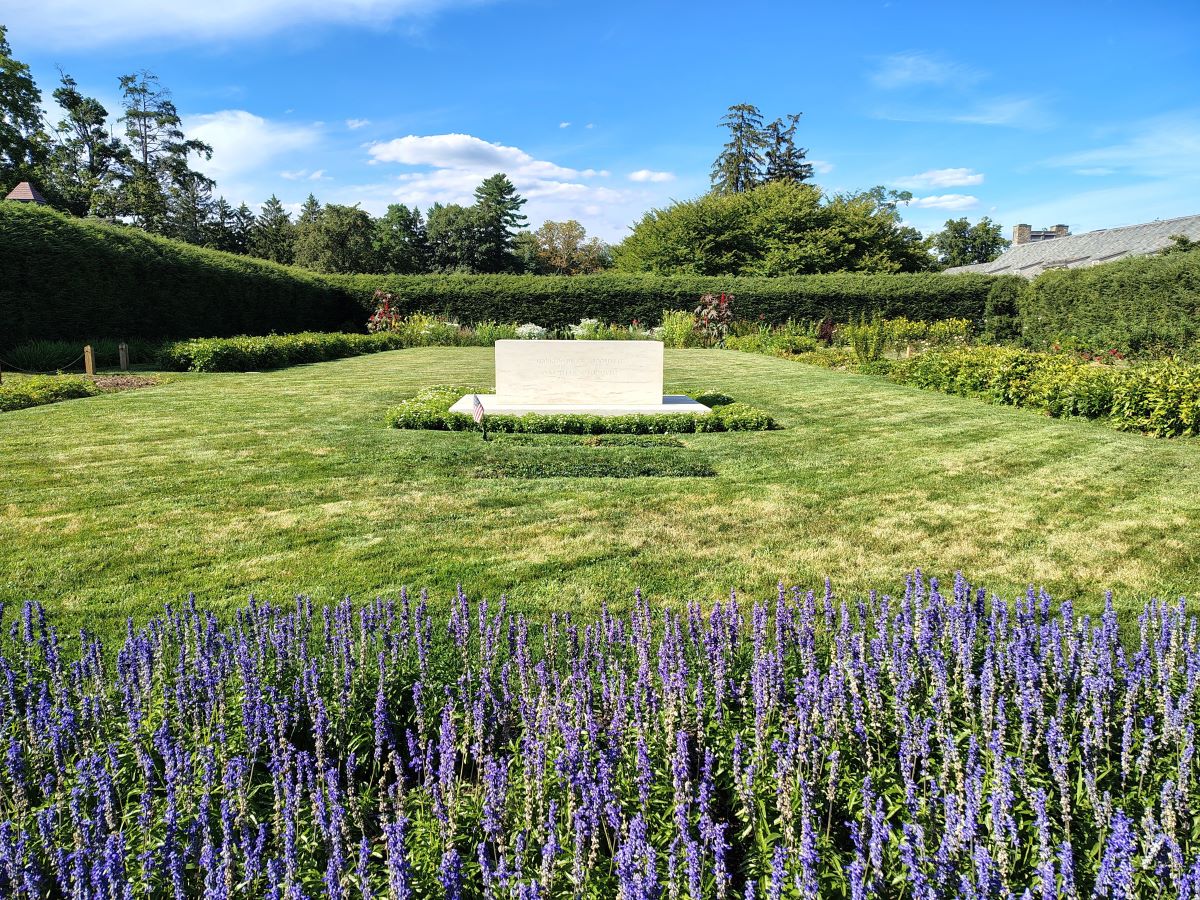
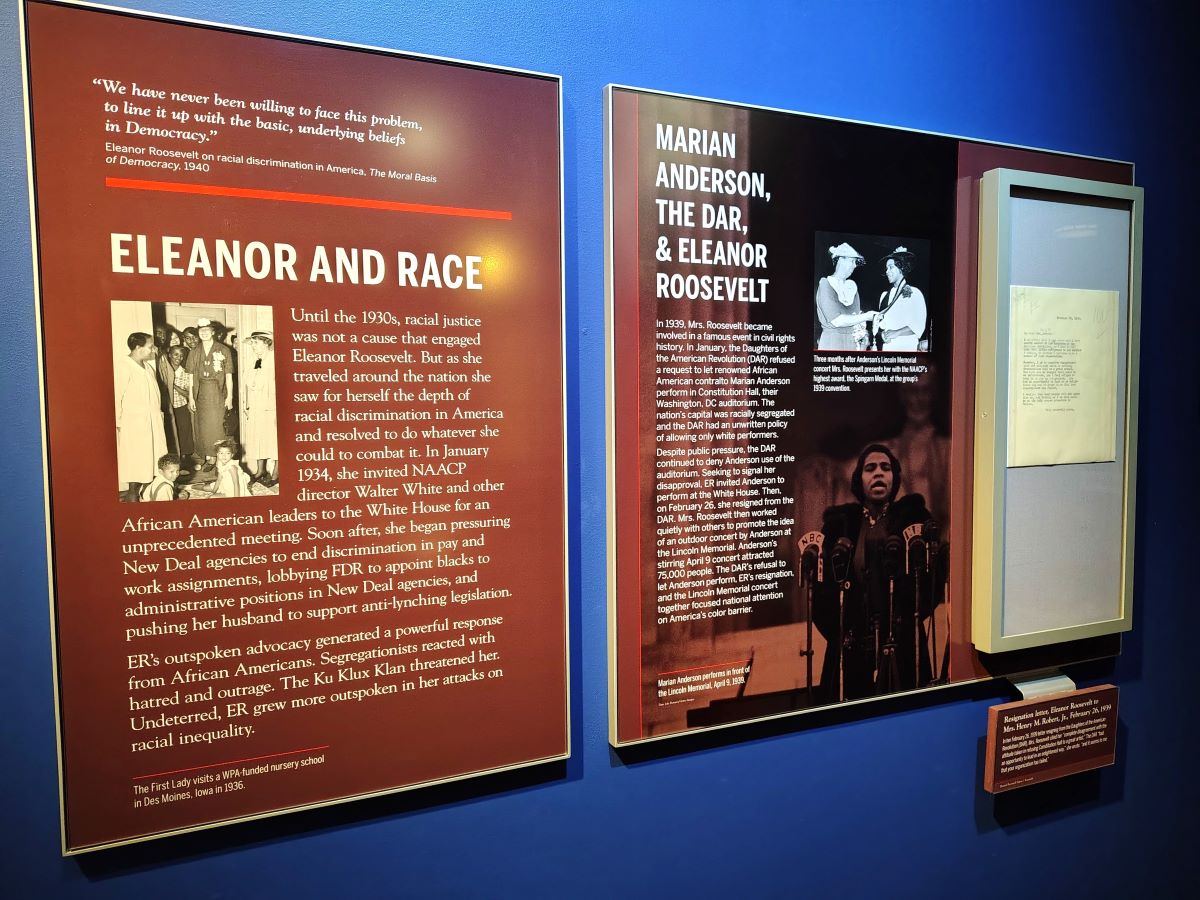
On the same property is the Franklin D. Roosevelt Presidential Library and Museum. Nowadays, every former American president builds a library to house his papers and memorabilia. The first one was built by Roosevelt in 1941. There is an exhaustive and vibrant installation of documents and artifacts on his life, his family, and his career.
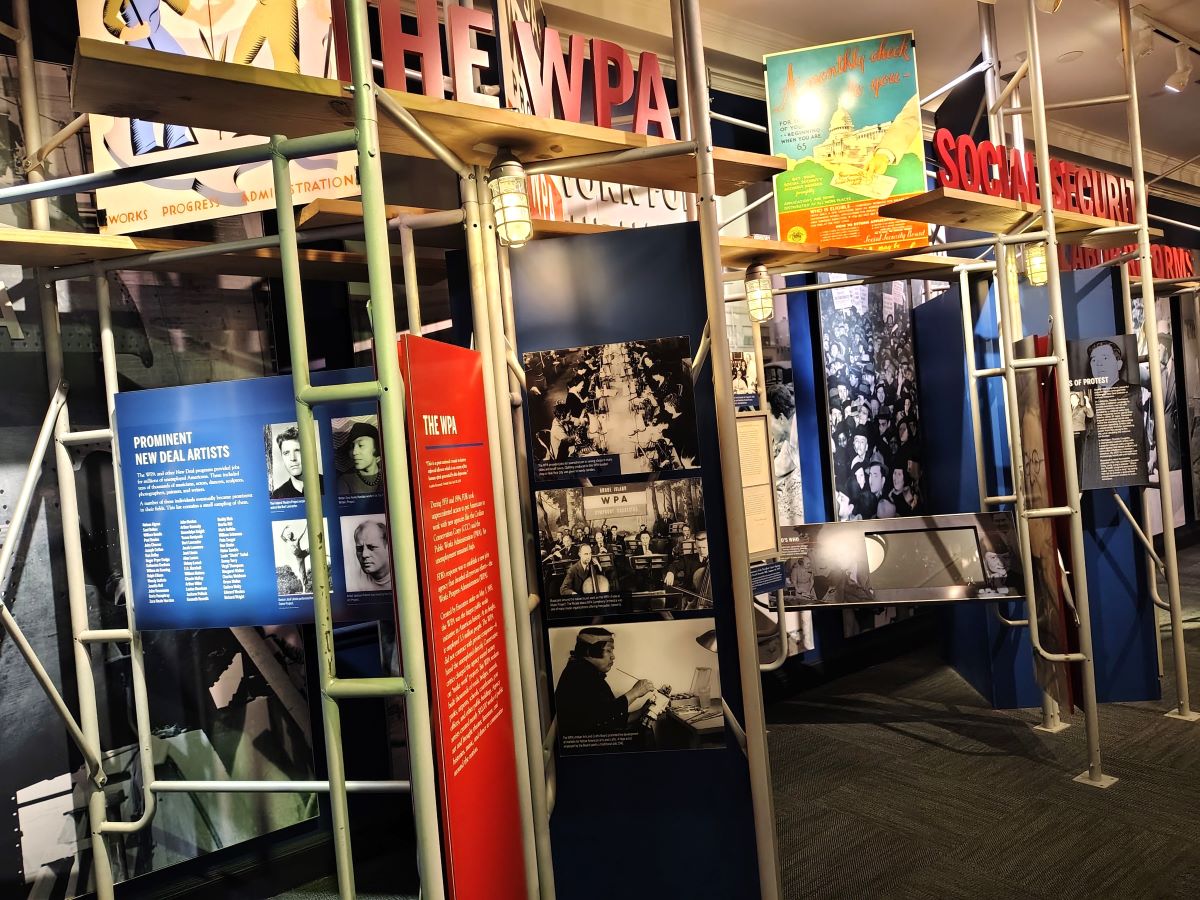
There are also changing exhibits on subjects such as the Revolutionary War, and the current Signature Moments: Letters from the Famous, Infamous, and Everyday Americans. Featured in the latter are letters from such figures as First Lady Eleanor, J. Edgar Hoover, civil rights activist Dr. Pauline Murray, Walt Disney, and Martin Luther King. Don’t miss the sculpture installations around the property, which vary from bronze busts to a windvane commemorating FDR’s famous Four Freedoms speech, to a pair of figures sliced out of the Berlin Wall.
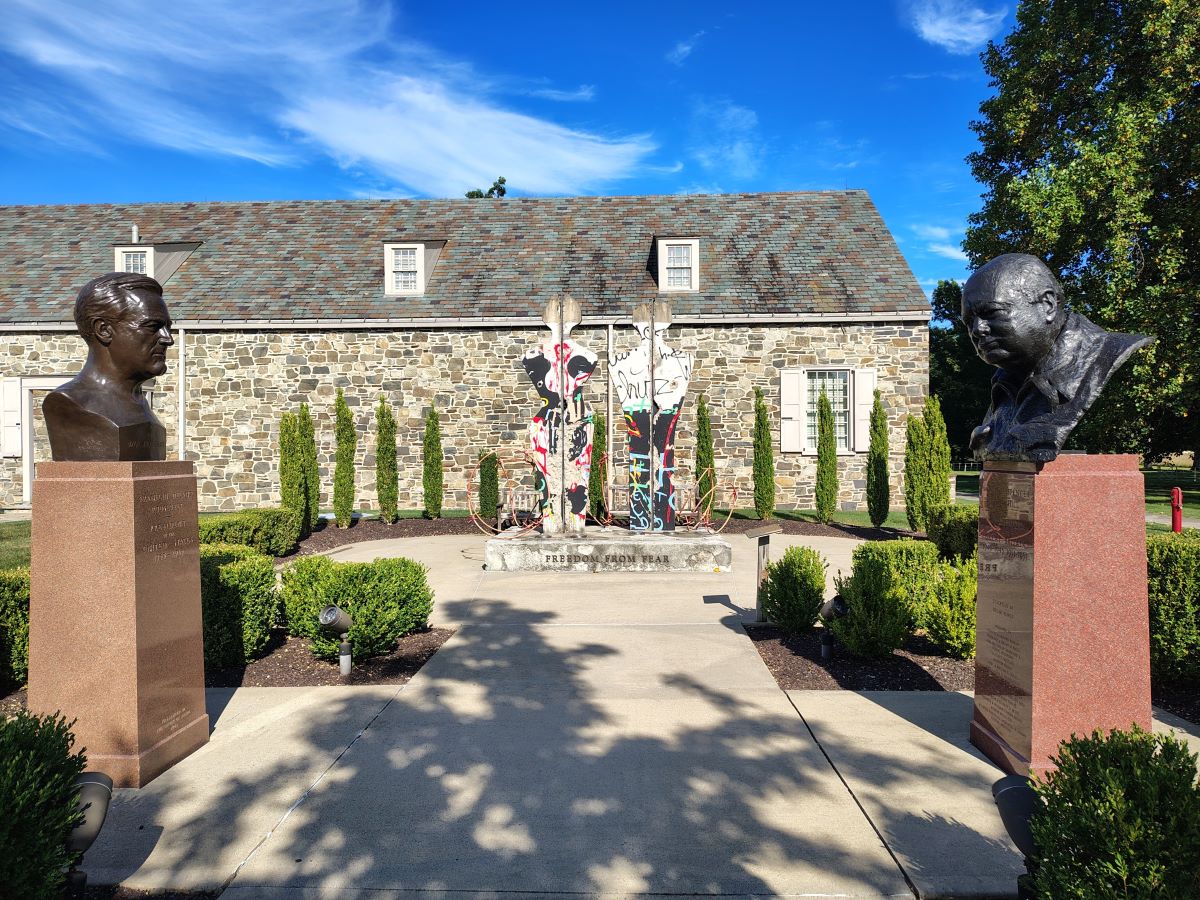
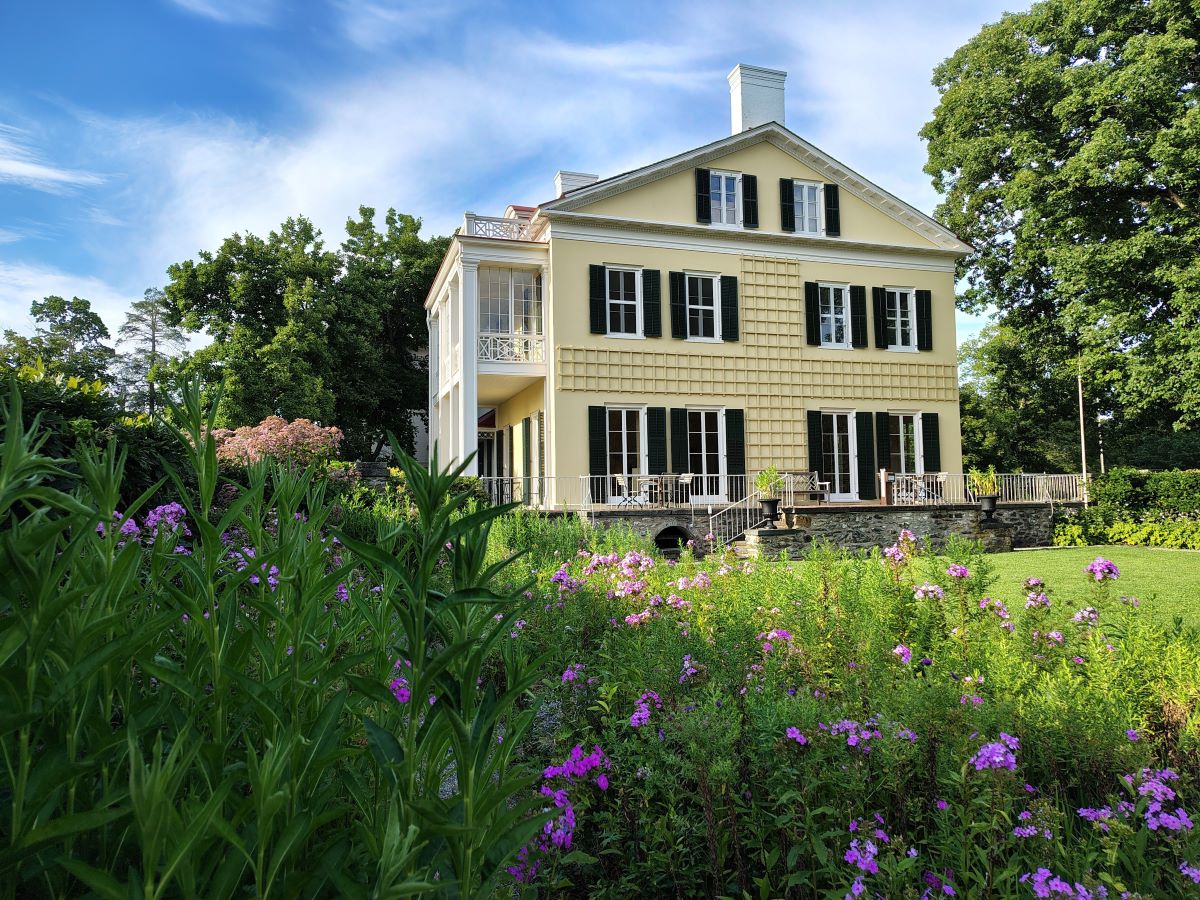
Adjacent to Springwood are the secluded gardens at Bellefield, the 1911 home of lawyer and politician Thomas Newbold. The walled exterior space was designed by Beatrix Jones Ferrand, who planned the grounds for many of the of America’s East Coast elite. The Newbold family donated the home to the National Park Service in 1976, to act as a protective buffer for the Roosevelt Historic Site, next door. The mansion, initially expanded by Charles Follen McKim of renowned firm McKim, Meade and White, is used by the historic site for offices and meeting spaces.
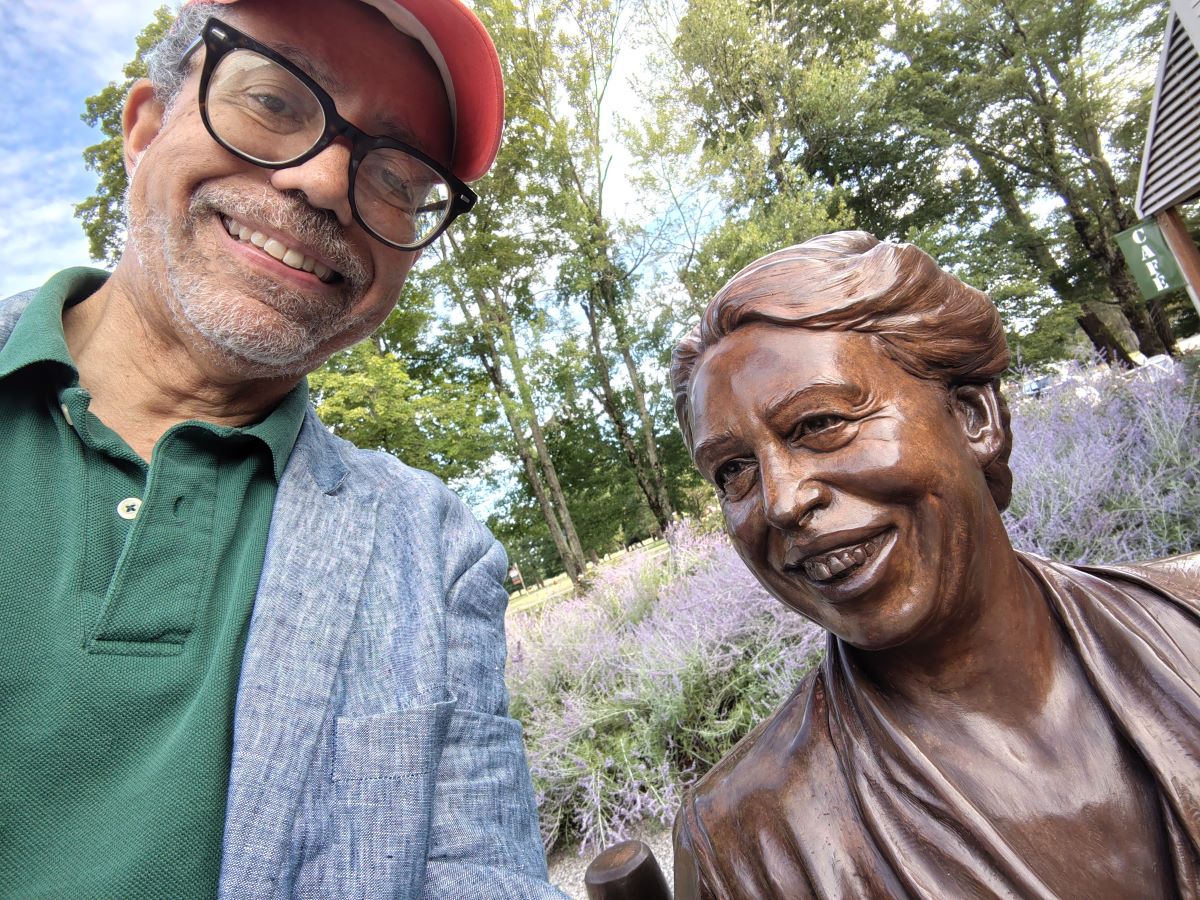
Franklin and Eleanor Roosevelt led amazingly complicated lives. As Franklin’s mother Sara Delano Roosevelt ruled the roost at Springwood, the couple had their own getaways nearby: Top Cottage and Val-Kill (Valley Stream) respectively. The latter was where Eleanor worked and socialized with her progressive gal pals and established a business that produced furniture, metal crafts, and weavings during the Great Depression.
[Note: As of publication, the Roosevelt family sites are closed due to a government shutdown. Visit https://www.doi.gov/shutdown for more information.]
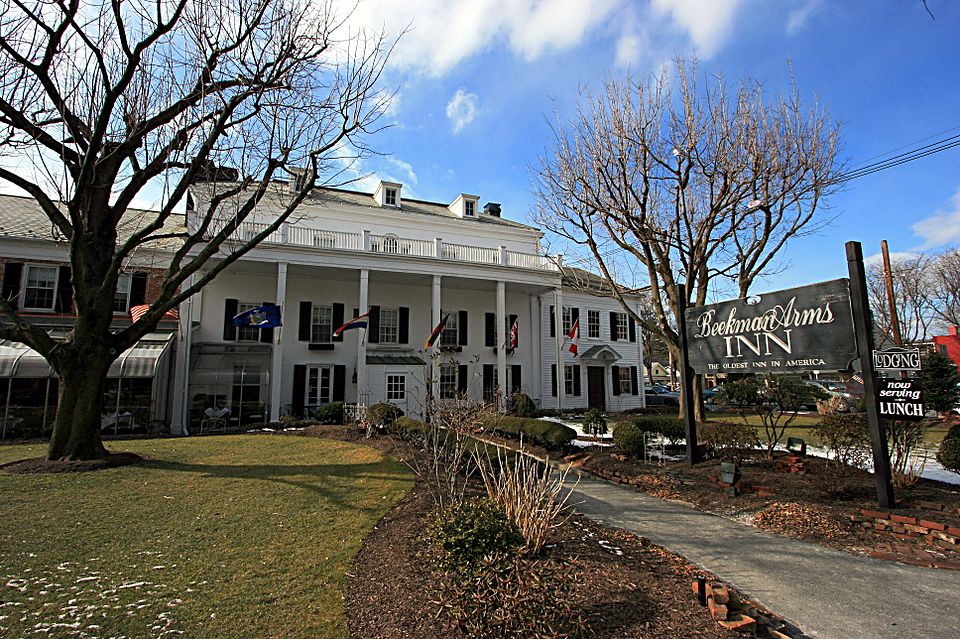
Next, drive north to Rhinebeck, home of what is considered the longest-continually-operating inn in America, the Beekman Arms. It first opened its doors in 1766, and welcomed historic figures such as George Washington, Alexander Hamilton, and Benedict Arnold.
While in Rhinebeck, stroll by the Richard and Janet Livingston Montgomery House. Built around 1750, the Montgomerys lived in the modest clapboard house when the General commanded the northern forces of the Continental Army, during the Revolutionary War. Richard was born in Ireland and was deployed to America during the French and Indian War, later becoming a General in the Continental army. Janet was a member of the prominent Livingston family, and the house was built on land given the couple by her grandfather, Henry Beekman. During the War, Montgomery and Benedict Arnold led a wintertime attack on the heavily fortified Quebec City. Montgomery was killed by grapeshot, and it supposedly Aaron Burr who tried to lug his body through the snow back behind Continental army lines. (It didn’t work; the body was retrieved a month later.) The house is owned and operated by the Daughters of the American Revolution.
Other historic sites to visit in the area include Staatsburgh State Historic Site and Vanderbilt Mansion National Historic Site just outside of Hyde Park, Montgomery Place at Bard College in Annandale-on-Hudson, and Clermont State Historic Site in Germantown.
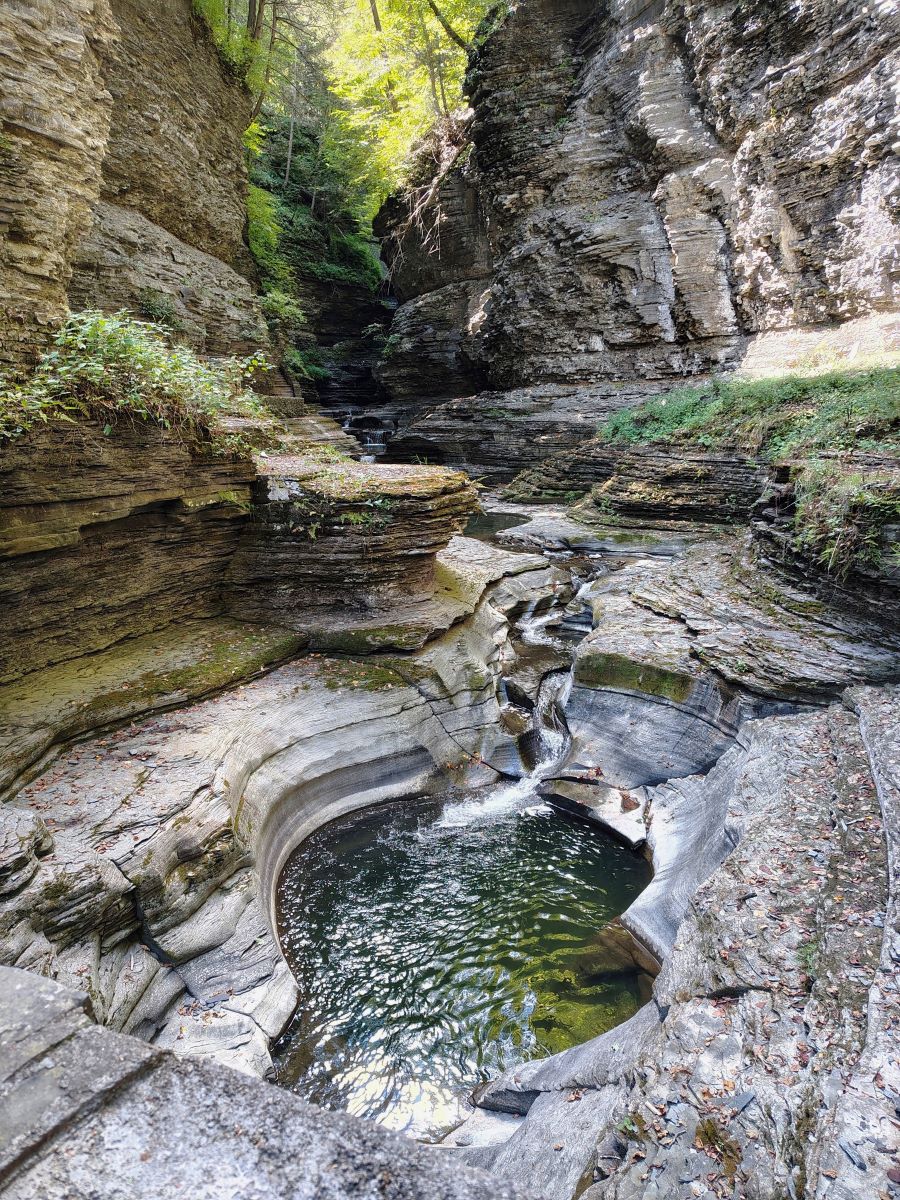
One of New York’s most incredible places to visit is Watkins Glen State Park. Located at the southern end of Seneca Lake, the Glen’s stream drops 400 feet, generating 19 waterfalls along the way. Glaciers not only carved the super-deep Finger Lakes themselves, but also deep gorges that characterize this region. Layers of sedimentary rock created the dramatic, architectural look of the gorges.
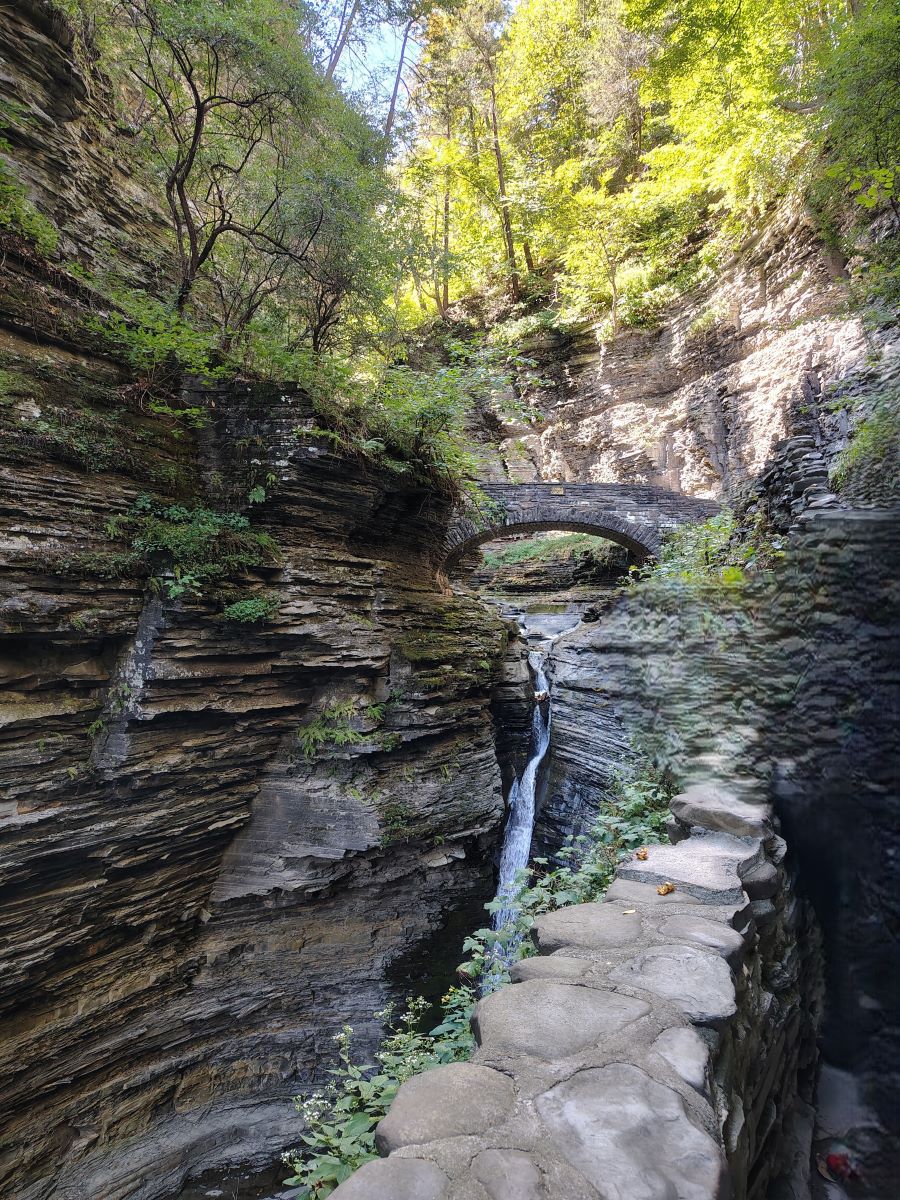
First opened as a private venture in 1863, Watkins Glen has been a New York State Park since 1911. During the Great Depression, the Civilian Conservation Corps constructed elaborate scenic walkways, stairways, and bridges to facilitate safer exploration of the Glen. Today, there is a welcome center at the southern end, with informative signage.
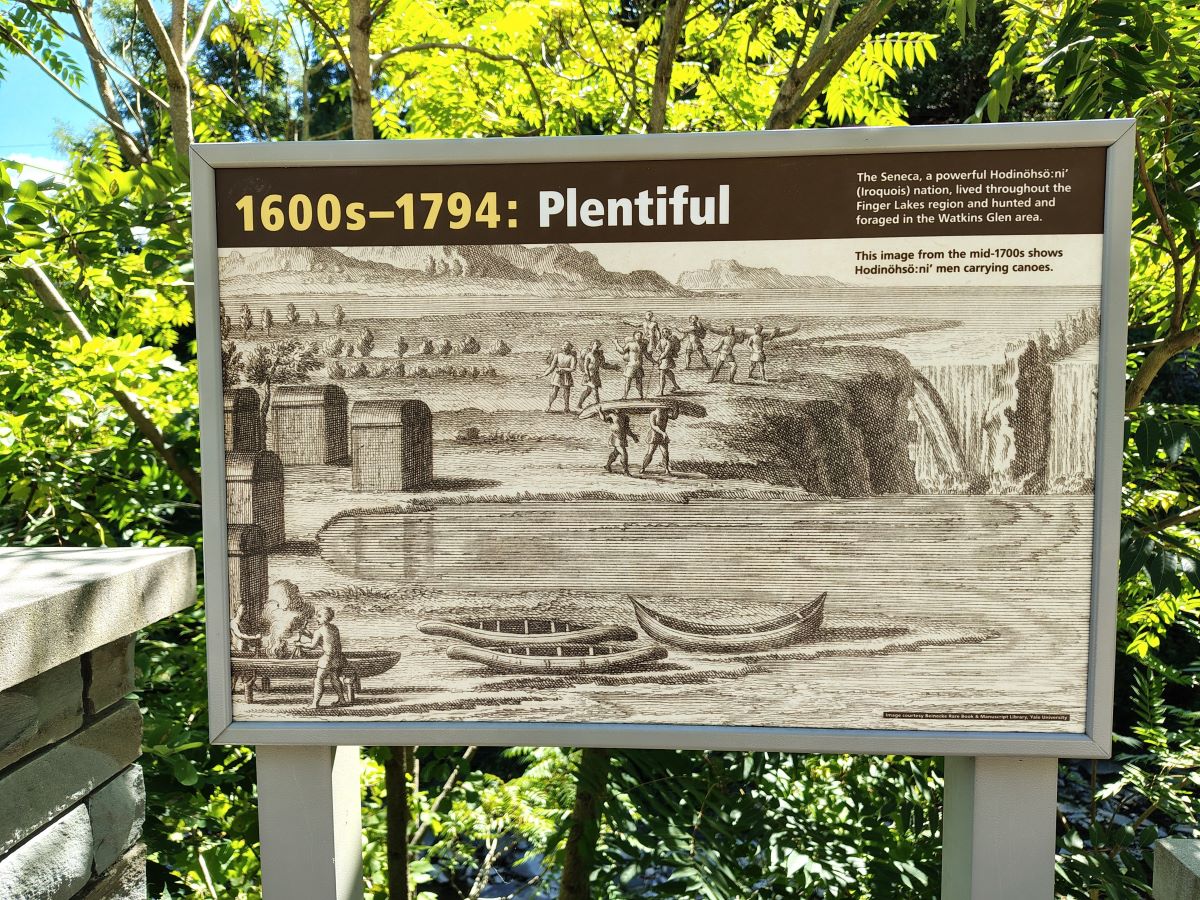
When traveling along scenic Route 17 in New York State, take a moment to check out the quiet charms of Owego. The downtown is comprised of a few blocks of historic buildings (like the Harmon-Pumpelly house shown here). It’s dotted with cafes and shops. There is a promenade along the Susquehanna River, from which to enjoy nature. The name comes from the Haudenosaunee word Ahwaga, meaning “where the valley widens.”
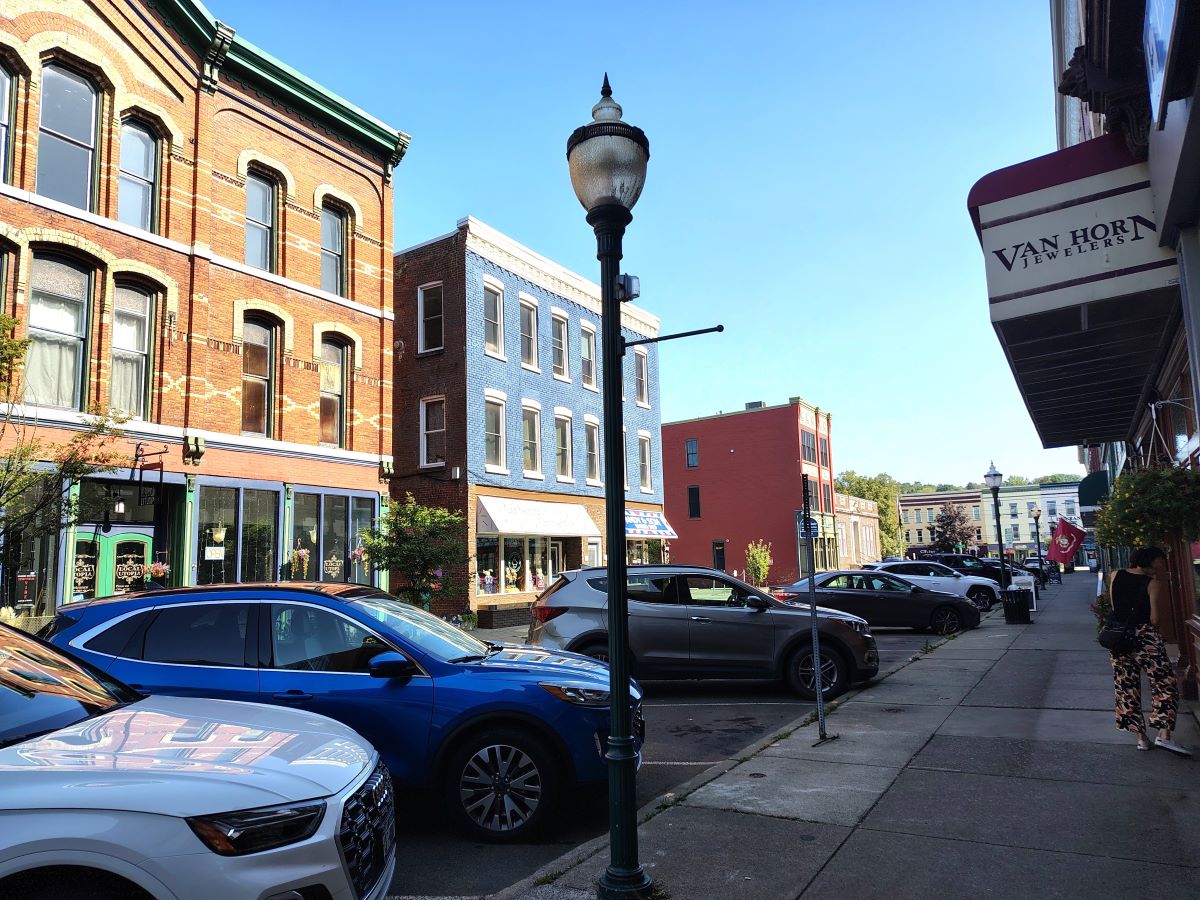
A sign near the waterfront details a Jesse McQuigg’s reminiscences of Indigenous people stopping to camp at Owego in the early 1800s. “I saw them coming down in their canoes, saw them at the bend in the river above the village… The canoes were of bark. It was a handsome sight [sic] and they approached the village; they came in such fine order. The came in a solid body and with great regularity and uniform movement, some of them ornamented with feathers, some with jewels, and covered with broaches generally of silver, generally with white woolen blankets and heavy stripes. Some had broad cloth blankets. They had their rifles, tomahawks and scalping knives with them, pipes and their kind of tobacco.”
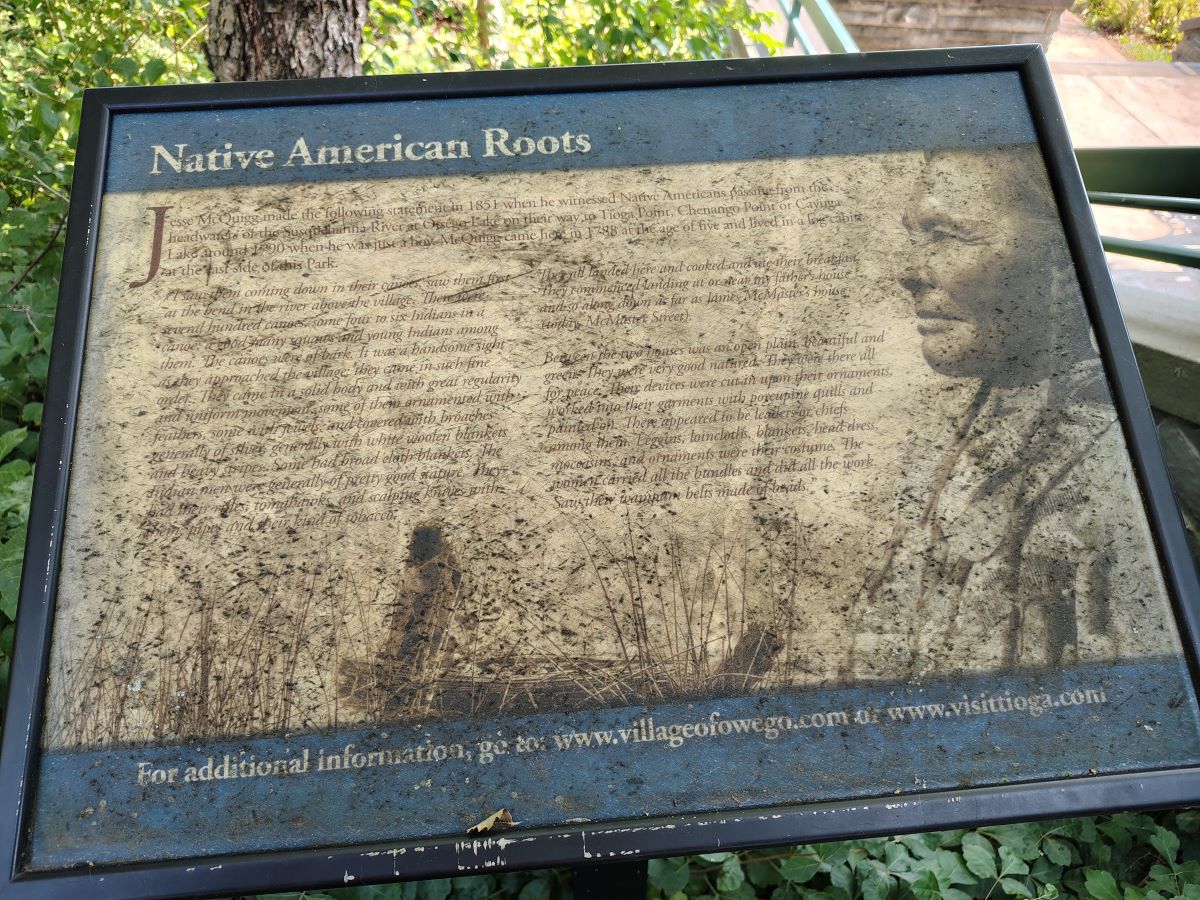
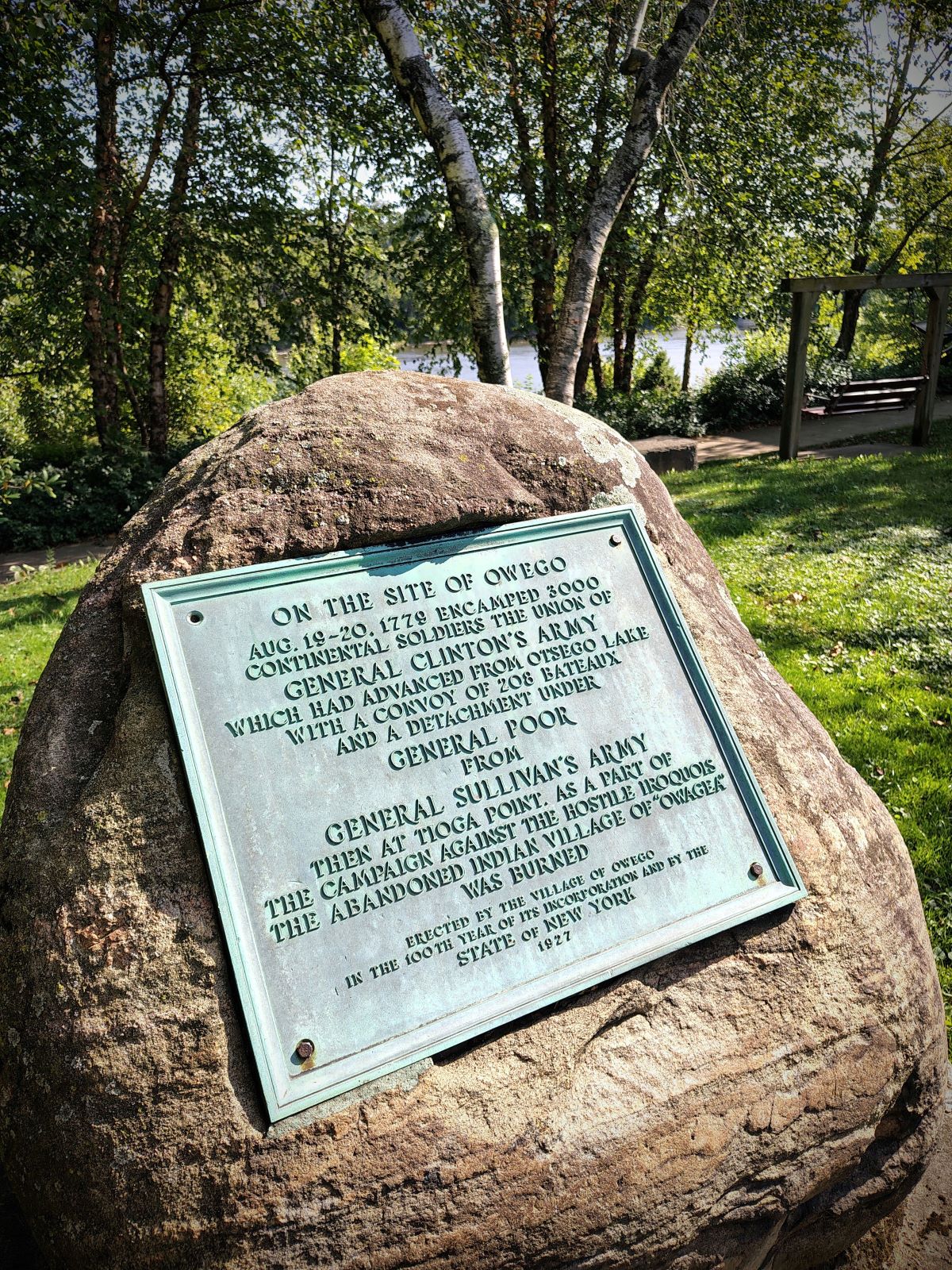
A nearby marker from 1929, however, talks about 3,000 Continental soldiers and 208 bateaux under Generals James Clinton and John Sullivan waging “campaign against the hostile Iroquois” in 1779. It goes on to say that “The abandoned Indian village of “Owages” was burned.” We now know that the Clinton-Sullivan Campaign—ordered by George Washington—was a blatant land grab and an effort to destroy the Six Nations of the Haudenosaunee, who were cooperating with the British. Villages were razed, crops were torched, and men, women, and children were forced out. Thousands of Indigenous refuges died from starvation, exposure, and disease. They were driven into the arms of the British at Fort Niagara for protection.
Other Finger Lakes historic sites to explore include Ganondagan State Historic Site in Victor, NY, the Women's Rights National Historic Site in Seneca Falls, the Harriet Tubman Home in Auburn, the Grainger Homestead in Canandaigua, and more!
%202.jpg)
Just a few minutes north of Albany, NY by car is the town of Cohoes, pronounced kə-HOHZ. It was once part of the massive Manor of Rensselaerswyck, which was deeded in 1630 to Kiliaen Van Rensselaer by the Dutch West India Company. Its most striking feature is Cohoes Waterfall, a stunning cataract on the Mohawk River. The first Erie Canal channel was completed in 1823 to circumvent the falls and other obstacles, kicking off growth. The channel was later moved from the south side of the river to the north.
In the 1800s, Cohoes was chockablock with mills, which processed Southern cotton. Its nickname was “Spindle City.” Its largest complex—most likely the largest in the world—the Harmony Mills, was incorporated in 1837, by Peter Harmony (né Pedro Regalado Ximeno García) who was born in Spain. In addition to being an industrialist, he was an enslaver, and one of the richest Americans of the 19th century. The mills are now reconfigured as luxury apartments.
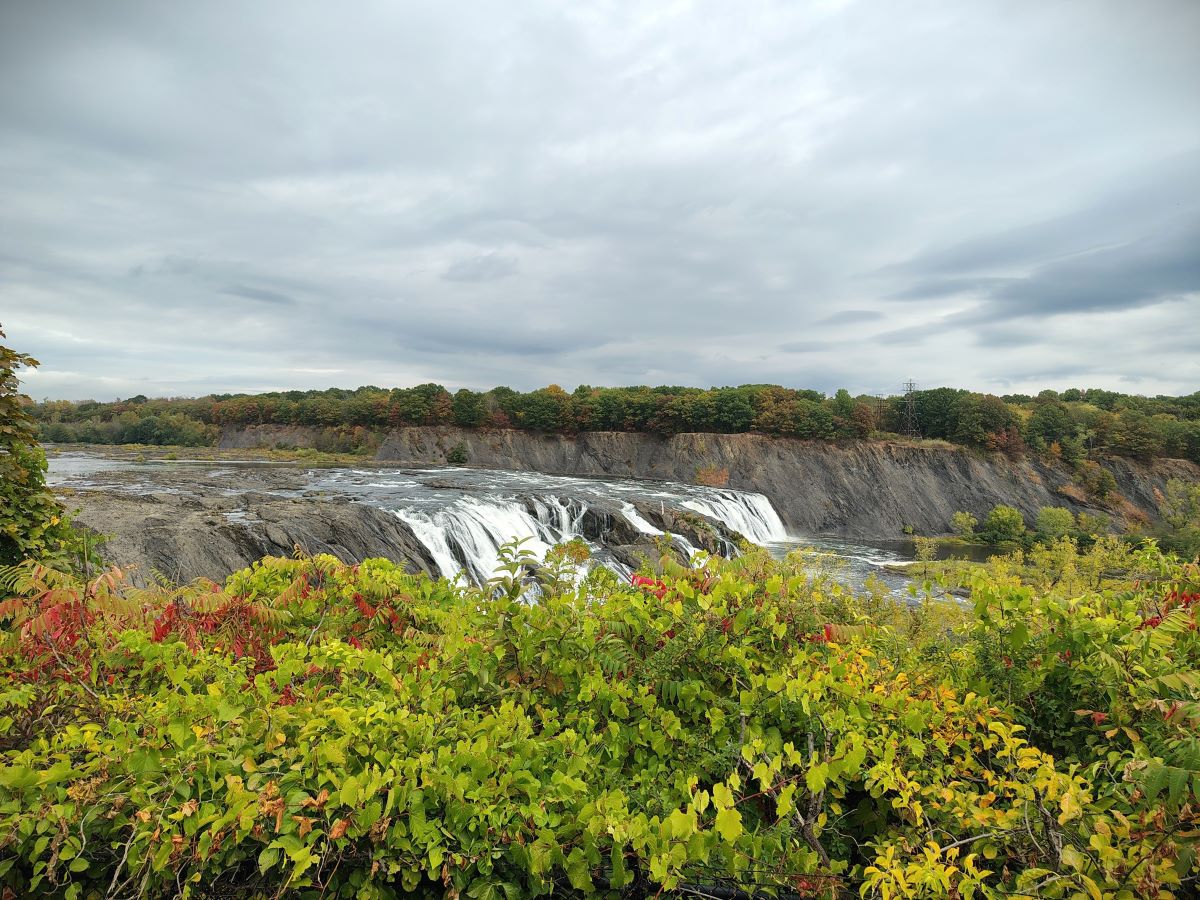
The best view of the falls is from Falls View Park, from which you can enjoy its approximate 1,000-foot width and 90-foot height, making it a mini-Niagara. Some of the Mohawk’s water is diverted for hydroelectric, and you can see it jetting out of an adjacent plant. When we visited, a hydro-corporation employee was on hand to direct us to the historical markers and the stairway to the base of the cliff.
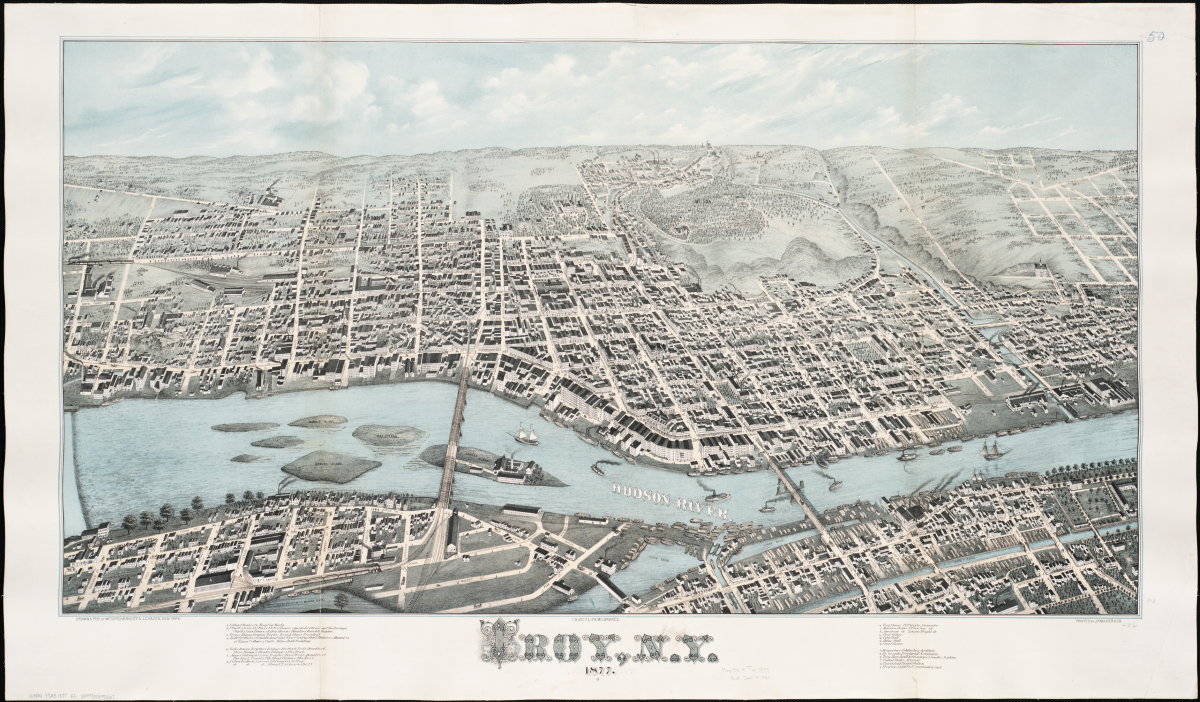
Ever been to “Collar City?” That’s what they called Troy, NY back in the day, due to its prominence in the manufacture of detachable shirt collars. In 1825, Hannah Lord Montague got tired of the constant laundering her husband’s shirts. He was a blacksmith, and the collars and cuffs got especially grimy. She improvised detachable replacements that could be washed separately and buttoned back onto a relatively clean shirt body. One of the biggest manufacturers of these was Cluett, Peabody, and Company whose factory is still extant, on Peebles Island, across the river.
Peebles Island State Park is a popular place for dog-walking and hiking along the shores of the Mohawk and Hudson Rivers. Peebles Island is also the site of the resource center for New York State historic sites and the headquarters of the State Historic Preservation Office (SHPO). Cluett, Peabody, and Company’s best-known collar was the Arrow, whose advertising was one of the most successful ad campaigns of all time.
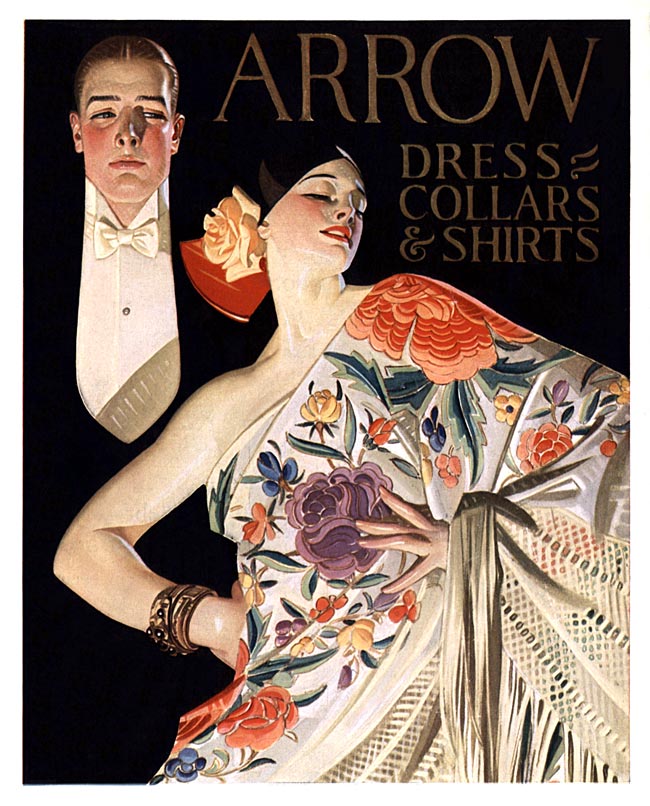
Originally carved out of the Manor of Rensselearwyck, Troy’s proximity to the Erie Canal and Hudson River made it a manufacturing hub of textiles and iron goods, and a transshipment point for New York and Vermont wheat, meat and dairy products.

Its downtown architecture is so much intact that it is serving as a substitute for New York City in HBO’s The Gilded Age. (Note that the Hudson River Museum up the street from PMH is another filming location.) Many of the scenes were photographed in the neighborhood adjacent to Russell Sage College, founded in 1916 by suffragist Margaret Olivia Slocum Sage as a women’s school of “practical arts.” Nearby is the ornate Paine Castle, built in 1896 by lawyer and financier John Welles Paine. TGA and Martin Scorsese’s The Age of Innocence filmed there. It’s owned and maintained by alumni of the Pi Kappa Phi at Rensselaer Polytechnic Institute, up the hill.
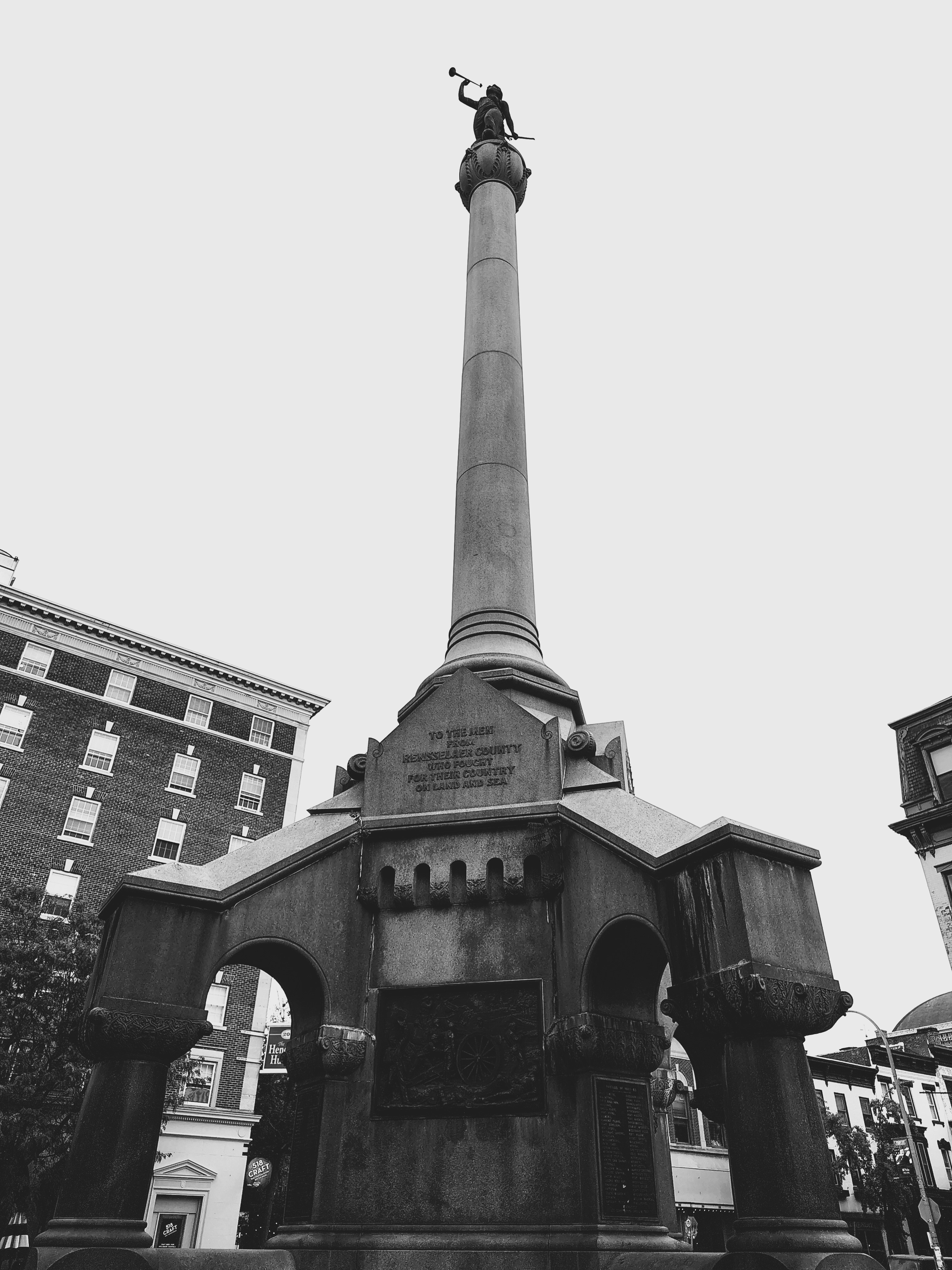
Other scenes from The Gilded Age were shot around Monument Square, where a towering Civil War memorial stands. Compare it with the one in front of the Manor Hall! Other scenes were filmed at the ornate Troy Savings Bank Music Hall. Roam the downtown and to explore the intriguing shops, museums, and cafés.
Other Capital Region historic sites to consider include the Hart Cluett Museum in Troy, Crailo State Historic Site in Rensselaer, Schuyler Mansion State Historic Site and Ten Broeck Mansion in Albany, and more!
These are just a few of the historic gems I've enjoyed, and there are many more to explore. What historic gem in New York will you visit next?
David C. Lucas is an interpreter at Philipse Manor Hall, giving public tours, working the front desk, and contributing to the website and social media. In his previous career, he spent years at Macy’s in Manhattan as a Graphic Designer and Art Director. Subsequently, he taught Design for several semesters at New York City University of Technology and worked at Rye Playland. He occasionally serves as a docent at the Hudson River Museum, and is the Trail Maintainer for the German Hollow Trail of the Catskill Forest.